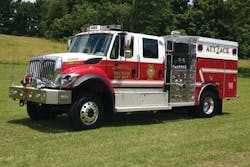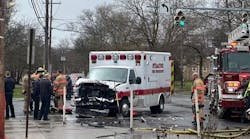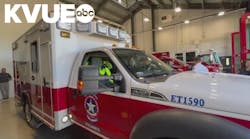Your apparatus committee has just spent the past eight months investigating different manufacturers and models of pumpers for your next new rig. After the bid opening, you find out that only one manufacturer put in a proposal for the pumper and that its bid is within the allocated budget for the project. Unfortunately, several days later, the committee learns that the city council, under advisement from the solicitor, has ruled that you cannot award the contract for the new pumper when only one bid was received. After several meetings with fire department officials and the city council, the apparatus committee is instructed to revise the specifications to "open them up" for a competitive-bidding process.
This situation is being played out in many communities as chief officers are being asked to not only justify why a new piece of apparatus is needed, but the bidding process is being scrutinized as never before with public funds for capital purchases. Not just on a local level, but several state attorneys general and auditors have been reviewing fire department expenditures and bidding practices.
During 2008, the State Commission on Investigation in New Jersey published a report on fire apparatus purchasing and in part stated: "Given the vital public safety mission associated with this machinery and the size of the public's financial stake in it, taxpayers are entitled to expect that fire trucks are purchased properly and efficiently through a transparent, accountable procurement system grounded in a competitive public process."
Part five of The Apparatus Architect series (Firehouse®, May 2001) discussed the various types of bidding specifications: manufacturers, performance and request for proposals (RFP) specifications. While there are advantages and disadvantages to each of these styles of bidding specifications, it is important to note which type of technical specification will provide your department with needed apparatus at a competitive price without violating local or state regulations.
During apparatus committee meetings conducted with prospective vendors, it is advisable to ask each of the manufacturers being seriously considered to prepare a set of specifications for the proposed apparatus for your review. Based on a bullet-style outline of specifications that your committee had previously prepared and the discussions held during your meeting, the manufacturer's representative should be armed with sufficient information to produce an initial set of specifications. At this point, the apparatus committee can review several sets of specifications, noting components that the members would prefer to have provided on the new apparatus and comparing the extent of descriptions of body compartments with dimensions and other critical areas.
In the past, some departments, either by past practice or custom, would choose one vendor as the preferred apparatus provider, then publish with few changes that manufacturer's specification in its entirety as the bid specifications for the new apparatus. Here is where we can begin to get into trouble. Virtually all apparatus manufacturers employ technical writers and engineers to ensure that some of their proprietary designs are incorporated and described in their specifications. There are two sides to this scenario.
In the first instance, the department wishes to specify a specific brand and style of intake and discharge valves for the fire pump, as it has positive experience with this manufacturer's valves. In addition, the department's maintenance shops routinely stock repair parts and seal kits for these components. The impact here is minimal, as most apparatus builders can supply the different brands of brass goods and hardware that are available to the fire service. Some larger manufacturers may use as standard one brand of valve, but by and large other choices are available and can be supplied with little or no cost impact.
In the second case, after the apparatus committee test drives a new demonstrator pumper, the members determine that the specifications should be written to state: "The apparatus shall be provided with a windshield with a minimum of 4,200 square inches of wraparound tinted safety glass with solar management treatment and supplied with four (4) vertical pantograph wiper blades."
There are several points here to consider. First, most builders of custom-chassis fire trucks have a windshield that provides sufficient viewing for the driver and officer. More often than not, the frontal viewing area is blocked by other components such as radios and mobile data terminals (MDTs) that are installed on the dashboard. While several thousand dollars may separate reputable bidders, it is not wise to attempt to justify the higher-priced unit based on something like the square-inch area of the windshield as a critical component on the apparatus. Using a manufacturer's proprietary specification may get you everything that you desire on your apparatus; however, it also guarantees that you will also get the manufacturer's standard components, which may not meet your needs in the long term. It also can put the department in a difficult position when you receive only one bid for the project and have no basis for comparison on the bid price being offered.
There are several alternatives to consider, including the development of an open specification, which clearly outlines the mission of the apparatus together with a listing of all of the major components on the apparatus identifying those considered to be "No Exceptions." Major components such as axles, tires, fire pumps and emergency lighting are available to all builders. However, engines, front-axle suspensions and body-compartment dimensions can be specific on just one manufacturer and can eliminate some vendors from bidding on the apparatus. It may be more beneficial to list all of the equipment that is going to be carried on the apparatus and determine the minimum cubic-foot storage area needed to accommodate this gear, rather than attempt to specify the precise dimensions of each body compartment. In this way, you will not only put the bidder on notice as to the anticipated hose, tool and equipment payload, but you will not inadvertently eliminate any bidder.
Whether your department chooses to use a manufacturer's specification or develop its own for use in the bidding process, you should clearly define those components or design criteria for which will allow alternatives to be proposed. In this case, every area or component where the bidder's proposal may be at variance with the department's specification should be noted as an "Exception" in the bidder's proposal, detailing what is being offered with a description as to why the requested component cannot be supplied. Where necessary, supporting technical information should be supplied for evaluation by the apparatus committee. The number of exceptions that a vendor may have to take with respect to the department's specification should be of lesser concern, with emphasis placed on the quality of the technical explanation as to why a component or design cannot be supplied.
The industry term for bidding against another manufacturer's specification is called "chasing the spec." Even with modern computer programs, a manufacturer's representative can spend four to five days putting together a well-developed proposal in response to a department's bid specifications. In some cases, a minimum number of exceptions are noted in the proposal for the department to review, leaving the apparatus committee to read each and every page of the proposal to determine exactly what the vendor is proposing to supply. At the point when the contract is awarded to a vendor, understand that the department is agreeing to have the apparatus constructed in accordance with the vendor's proposal and not necessarily with the department's specification. If any item within the vendor's bid is not in full compliance with the department's original specification and no exception has been noted, the onus is on the department to identify these items and correct them prior to entering into a formal contract.
After the bid proposals have been opened, the apparatus committee should develop a comprehensive spreadsheet to identify the major components and features on the apparatus and then go through each bidder's proposal to see exactly what is being offered. In these tight economic times, there can be great differences between the lower and upper bid prices for a single unit. At times, it can be difficult to initially determine how there could be a spread of up to $60,000 between bidders. Unless you read all of the details in each of the vendor's proposals, you may easily be misled into thinking that each bidder is supplying exactly what your specifications requested.
If your department has not obtained any outside assistance from an experienced apparatus consultant, now is the time to get some help in reviewing each bidder's proposal in detail to provide a written report for the department to review. Formal requirements for supplying bid bonds and performance bonds can generally be easily determined for compliance. Evaluating the differences in warranty terms and body-construction techniques may require some expertise that is beyond the capabilities of your local resources.
Following some of these concepts will ensure that your department will obtain several competitive bids for your new apparatus and will make the entire specification and bidding process go smoothly. Time spent during the initial phases of work with your apparatus committee will pay dividends in the end.
TOM SHAND, a Firehouse® contributing editor, is a 36-year veteran of the fire service and works with Michael Wilbur at Emergency Vehicle Response, consulting on a variety of fire apparatus and fire department master-planning issues. MICHAEL WILBUR, a Firehouse® contributing editor, is a lieutenant in the New York City Fire Department, assigned to Ladder Company 27 in the Bronx, and has served on the FDNY Apparatus Purchasing Committee. He consults on a variety of apparatus-related issues around the country. For further information, access his website at www.emergencyvehicleresponse.com.






